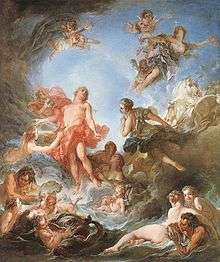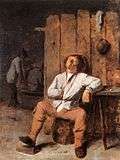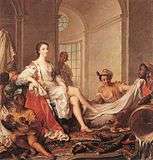Wallace Collection



The Wallace Collection is an art collection in London open to the public, housed at Hertford House in Manchester Square, in the City of Westminster, the former townhouse of the Seymour family, Marquesses of Hertford. It comprises a world-famous range of fine and decorative arts from the 15th to the 19th centuries with large holdings of French 18th-century paintings, furniture, arms & armour, porcelain and Old Master paintings arranged into 25 galleries.
It was established in 1897 from the private collection mainly created by Richard Seymour-Conway, 4th Marquess of Hertford (1800–1870), who left both it and the house to his illegitimate son Sir Richard Wallace (1818–1890), whose widow bequeathed the entire collection to the nation. The collection opened to permanent public view in 1900 in Hertford House, and remains there to this day. A condition of the bequest was that no object should ever leave the collection, even for loan exhibitions. Admission is free.
The Wallace Collection is a non-departmental public body.
Building
The 16th and 17th century Hertford House, townhouse of Edward Seymour, 1st Earl of Hertford (1539-1621) was in a different location, namely in Cannon Row in Westminster. His father Edward Seymour, 1st Duke of Somerset (executed 1552), brother of Queen Jane Seymour, had started building the palatial Somerset House on the Strand as his townhouse, but did not live to complete it. The present House in Manchester Square was the townhouse of a later branch of the family. In 2000 the inner courtyard was given a glass roof and a restaurant was opened named "Cafe Bagatelle" after the Château de Bagatelle in Paris purchased in 1835 by Francis Seymour-Conway, 3rd Marquess of Hertford.
Interior
Ground Floor
Hall
The Entrance Hall contains marble busts of the three principal Founders of the Wallace Collection: Richard Seymour-Conway, 4th Marquess of Hertford (1800-70), his son, Sir Richard Wallace (1818-90) and in the lobby, Lady Wallace, who bequeathed the contents of Hertford House to the British Nation on her death in 1897. The room has retained the aspect it had in Sir Richard Wallace's day more than any other room in the building.
Front State Room
This room reveals the opulence of the London town house in the 1870s and sets the scene for visitors to the Wallace Collection. The State Rooms were the grandest rooms in the house, in which the most important visitors were received. When it was the home of Sir Richard and Lady Wallace, visitors to Hertford House first entered the Front State Room, then, as now, hung with portraits. Some of the modern furniture seen in the room in 1890 are no longer in the Collection, but the mounted porcelain displayed on the cabinets and the superb chandelier made by Jean-Jacques Caffiéri, have been returned to the room.
Back State Room
The Back State Room is today dedicated to the patronage of King Louis XV (1715-74) and his mistress, Madame de Pompadour. It displays some of the greatest examples in the Wallace Collection of art in the rococo style, which flourished under their auspices. 'Rococo' derives from the French word 'rocaille', which means loose stones on rocky ground. This exuberant, animated style explores asymmetrical natural shapes with fountain imagery, foliage and flowers, swirling scrolls and sea animals.
Sir Richard Wallace used the Back State Room to entertain guests to Hertford House. During his lifetime it had wooden boiserie panelling on the wall; the great chandelier, by Jacques Caffiéri, dating from 1751, remains in the room.
Dining Room
The room contains masterworks of French eighteenth-century portraiture by Nattier and Houdon and two oil sketches by Jean-François de Troy, for decoration of Louis XV's dining room in Fontainebleau, shown to the king for approval.
As its name suggests, the Dining Room was the room in which Sir Richard and Lady Wallace would generally take their main meals. The doors to the Hall, closed in 1897, have been reopened to enable the visitor to walk through the house into the courtyard.
Billiard Room
The Billiard Room is a showcase for some of the best furniture by André-Charles Boulle (1642-1732) and for the arts under Louis XIV and during the Régence. Boulle was cabinet maker to Louis XIV (1638-1715), the self-styled Sun King, during whose reign France became pre-eminent in the arts. Louis XIV set up a well-organised and efficient system of state support for the arts to create the official image of the monarchy and to support the economy.
In 1897 the Billiard Room was dominated by a huge billiard table, as was usual in many larger houses at the time.
Sixteenth Century Gallery
The Sixteenth-Century Gallery houses works of art from the Medieval and Renaissance periods and a group of important Renaissance paintings. This part of the Wallace Collection was mainly assembled by Sir Richard who, like many nineteenth-century collectors, was fascinated by the art and history of Europe during the Middle Ages and Renaissance. The Sixteenth-Century Gallery comprised two smaller rooms during Sir Richard and Lady Wallace's lifetime. The contemporary photograph shows how one room was arranged by Sir Richard as a cabinet of curiosities, with paintings and maiolica densely hung on the walls and smaller works of art kept in cases or inside Renaissance cabinets. The other room knows as the Canaletto Room, was used to display the collection of paintings by Canaletto.
Collections
The Collection numbers nearly 5,500 objects and is best known for its quality and breadth of eighteenth-century French paintings, Sèvres porcelain and French furniture.
The Wallace Collection also displays many other treasures, such as two paintings by Titian, five Rembrandts, nine Rubenses, four Van Dycks, eight Canalettos, nineteen Bouchers, masterpieces by de Hooch, nine Teniers, Frans Hals, nine Murillos, two Velázquez and paintings by Domenichino, Cima, Daddi, Reni, Rosa, Thomas Gainsborough, Joshua Reynolds, Antoine Watteau, Nicholas Lancret, Jan Steen, Aelbert Cuyp and nine Guardis. The Collection also includes a fine collection of arms and armour, featuring both European and Oriental objects, as well as displays of gold boxes, miniatures, sculpture and medieval and Renaissance works of art such as maiolica, glass, bronzes and Limoges enamels.
The works of art in the Collection comprise:[1]
- Paintings, watercolours and drawings 775
- Furniture 528
- Ceramics 510
- European and Oriental arms and armour 2,370
- Sculpture 466
- Miniatures 334
- Medieval and Renaissance works of art 363
- Goldsmiths' work 120
 Large Drawing Room - Contains some of the most spectacular works by the French furniture-maker, Andre-Charles Boulle
Large Drawing Room - Contains some of the most spectacular works by the French furniture-maker, Andre-Charles Boulle Part of the Wallace Collection's great ensemblage of Sèvres porcelain
Part of the Wallace Collection's great ensemblage of Sèvres porcelain Front State Room - Redecorated in the mid-1990s to appear as though it would have in the late-19th century
Front State Room - Redecorated in the mid-1990s to appear as though it would have in the late-19th century The Great Gallery in 2012, featuring Rubens' "Landscape With A Rainbow", portraits by Van Dyck, and other important works
The Great Gallery in 2012, featuring Rubens' "Landscape With A Rainbow", portraits by Van Dyck, and other important works
Departments






_-_WGA08417.jpg)
The Wallace Collection is split into six curatorial departments, Pictures and Miniatures, Ceramics and Glass, Sculpture and Works of Art, Arms and Armour, Sèvres porcelain and Gold Boxes and Furniture.
Pictures and miniatures
The Wallace Collection's Old Master paintings represent some of the finest works of art in the world, executed by most of the leading artists of their period. The paintings include important works from all periods between the fourteenth to the mid-nineteenth century.
The Wallace Collection is particularly strong in Dutch and Flemish paintings of the seventeenth century and in eighteenth and nineteenth-century French paintings, though there are also outstanding works by English, Italian and Spanish artists. Strengths of the collection include examples by Rembrandt, Rubens, Van Dyck, Canaletto, Gainsborough, François Boucher, Fragonard, Murillo, Titian, Poussin and Velázquez.
The inventory of pictures, watercolours and drawings comprises all the major European schools.
Paintings, drawing and watercolours from the Wallace Collection
- British, German, Spanish & Italian – 151 paintings, 60 drawings[2]
- French (19th Century) – 134 paintings, 57 watercolours[3]
- French (before 1815) – 144 paintings, 8 drawings and watercolours[4]
- Dutch – 173 paintings, 2 drawings[5]
- Flemish – 8 paintings[5]
Dutch School
- Ferdinand Bol – 1 painting;
- Gerard ter Borch – 2 paintings;
- Aelbert Cuyp – 5 paintings;
- Gerrit Dou – 1 painting;
- Frans Hals – 1 painting;
- Bartolomeus van der Helst - 1 painting;
- Meyndert Hobbema – 5 paintings;
- Melchior d'Hondecoeter - 3 paintings;
- Pieter de Hooch – 2 paintings: A Boy Bringing Bread and A Woman Peeling Apples;
- Gabriel Metsu – 5 paintings;
- Adriaen van Ostade – 2 paintings;
- Isack van Ostade - 2 paintings;
- Rembrandt – 5 paintings;
- Jacob Isaakszoon van Ruisdael – 4 paintings;
- Frans Snyders – 1 painting;
- Jan Steen – 5 paintings;
- Adriaen van de Velde – 2 paintings;
- Willem van de Velde the Younger – 8 paintings;
- Jan Weenix – 13 paintings;
- Philips Wouwerman – 6 paintings;
English School
- Thomas Gainsborough – 2 paintings;
- John Hoppner – 1 painting;
- Sir Edwin Landseer – 4 paintings;
- Thomas Lawrence – 5 paintings;
- Joshua Reynolds – 12 paintings;
- J.M.W. Turner – 4 paintings;
Flemish School
- Hans Memling – 1 painting;
- Pieter Pourbus – 1 painting;
- Pourbus the Elder, Frans - 1 painting;
- Peter Paul Rubens – 9 paintings;
- David Teniers the Younger – 9 paintings;
- Anthony van Dyck – 4 paintings;
French School
- François Boucher – 17 paintings;
- Philippe de Champaigne – 4 paintings;
- Jean-Baptiste-Camille Corot – 1 painting;
- Eugène Delacroix – 2 paintings;
- Hippolyte Delaroche – 12 paintings;
- Gaspard Dughet – 1 painting;
- Jean-Honoré Fragonard – 8 paintings;
- Théodore Géricault – 2 paintings;
- Jean-Baptiste Greuze – 19 paintings;
- Nicolas Lancret - 11 paintings;
- François Lemoyne - 2 paintings;
- Claude Lorrain – 1 painting;
- Jean-Marc Nattier – 3 paintings;
- Jean-Baptiste Oudry - 7 paintings;
- Jean-Baptiste Pater - 13 paintings;
- Nicolas Poussin – 1 painting;
- Jean-François de Troy – 2 paintings;
- Claude-Joseph Vernet – 2 paintings;
- Horace Vernet – 30 paintings;
- Jean-Antoine Watteau – 8 paintings;
Italian School
- Francesco Albani - 1 painting;
- Canaletto, (Giovanni Antonio Canal) – 8 paintings;
- Giovanni Battista Cima da Conegliano – 2 paintings;
- Carlo Crivelli – 1 painting;
- (Domenichino) – 1 painting;
- Francesco Guardi – 9 paintings;
- Bernardino Luini - 4 paintings;
- Salvator Rosa – 1 painting;
- Andrea del Sarto – 1 painting;
- Titian (Tiziano Vecelli) – 2 paintings;
- Sassoferrato - 3 paintings;
Spanish School
- Alonso Cano - 1 painting;
- Bartolomé Esteban Murillo – 9 paintings;
- Diego Velázquez – 2 paintings;
Gallery
Paintings
- Dutch paintings
 Adriaen Brouwer - Sleeping peasant
Adriaen Brouwer - Sleeping peasant Aelbert Cuyp - The Avenue at Meerdervoort, 1650–52
Aelbert Cuyp - The Avenue at Meerdervoort, 1650–52
- Flemish paintings
 Anthony van Dyck - Paris, c. 1628
Anthony van Dyck - Paris, c. 1628 Peter Paul Rubens - Landscape with a Rainbow, c. 1638
Peter Paul Rubens - Landscape with a Rainbow, c. 1638
- French paintings
 François Boucher - Madame de Pompadour, 1759
François Boucher - Madame de Pompadour, 1759 François Boucher - Mars and Venus
François Boucher - Mars and Venus Jean-Honoré Fragonard - The Musical Contest, 1754–55
Jean-Honoré Fragonard - The Musical Contest, 1754–55 Jean-Honoré Fragonard - The Swing, 1767
Jean-Honoré Fragonard - The Swing, 1767_-_02.jpg) Jean-Marc Nattier - The Comtesse de Tillières, 1750
Jean-Marc Nattier - The Comtesse de Tillières, 1750 Jean-Marc Nattier - Mademoiselle de Clermont as a Sultana, 1733
Jean-Marc Nattier - Mademoiselle de Clermont as a Sultana, 1733.jpg) Jean-Antoine Watteau - The Halt during the Chase, c. 1718-20
Jean-Antoine Watteau - The Halt during the Chase, c. 1718-20
- Italian paintings
 Francesco Guardi - The Dogana with the Giudecca, c. 1775
Francesco Guardi - The Dogana with the Giudecca, c. 1775
- Spanish paintings
 Bartolomé Esteban Murillo - Marriage of the Virgin, 1670
Bartolomé Esteban Murillo - Marriage of the Virgin, 1670
Ceramics
There are fine examples of porcelain by the greatest of makers, including Meissen and one of the world's greatest collections of Sèvres.
The Wallace Collection contains the richest and most distinguished museum collections of eighteenth-century Sèvres porcelain in the world. It includes 137 vases, 80 tea wares, 67 useful wares, 3 biscuit figures and 130 plaques (mostly on furniture), and was acquired by the Marquesses of Hertford and Sir Richard Wallace between c. 1802–75.[6]
Furniture
The Wallace Collection holds one of the most important collections of French furniture in the UK, and ranks alongside the Musée du Louvre, the Royal Collection, Waddesdon Manor, the collections of the Duke of Buccleuch, the Getty Museum and the Metropolitan Museum of Art as one of the greatest and most celebrated in the world.[7] Totalling more than five hundred pieces, the collection consists largely of eighteenth-century French furniture but also includes some significant pieces of nineteenth-century French furniture, as well as interesting Italian furniture and a few English and German pieces. The collection ranges from cabinet furniture, much of which is veneered with brass and turtleshell marquetry (commonly known as "Boulle" marquetry) or with wood marquetry, to seat furniture, clocks and barometers, gilt-bronze items including mounted porcelain and hardstones, mantelpieces, mirrors, boxes and pedestals. One highlight of the collection is the major collection of furniture attributed to André-Charles Boulle (1642–1732), perhaps the best-known cabinet-maker ever to have lived.
Joseph Baumhauer – 1 item;
- Bas d'armoire, c. 1765–1770;
André-Charles Boulle – 22 items;
- Armoire, c. 1695;
- Armoire, c. 1700;
- Armoire, c. 1700;
- Armoire, c. 1715;
- Bureau plat, c. 1700–10;
- Cabinet avec son pied, c. 1667;
- Cartonnier et pendule, c.1715;
- Commode, c. 1710;
- Paire de grande table, c. 1705;
- Mantle clock, c. 1715;
- Mantle clock, c. 1726;
- Médaillier, c. 1710–20;
- Miroir de toilette, c. 1713, (delivered to the Duchesse de Berry);
- Paire de coffre de toilette, c. 1700;
- Paire de torchéres, c. 1700–10;
- Pendule et gaine, c. 1712–20;
- Pendule et gaine, c. 1720–25;
- Table à mettre dans un trumeau, c. 1705;
Martin Carlin – 4 items;
- Paire de Encoignures, c. 1772;
- Secrétaire à abattant, c. 1775;
- Table en secrétaire, c. 1783;
Adrien Delorme – 2 items;
- Paire de bibliothèque basse
Étienne Doirat – 1 item;
- Commode, c. 1720;
Étienne Levasseur – 5 items;
- Grande Bibliothèque, c. 1775;
- Paire de bibliothèque basse, c. 1775
- Paire de meubles à hauteur de'appui, c. 1775
Alexandre-Jean Oppenord – 3 items;
- Bureau plat, 1710;
- Commode, c. 1695;
- Écritoire, c. 1710;
Jean Henri Riesener – 10 items;
- Commode, delivered to Marie-Antoinette's cabinet intérieur de la reine at Versailles, c. 1780;
- Commode, delivered to Marie-Antoinette for Chateau de Marly, c. 1782;
- Encoignure, delivered to Marie-Antoinette's cabinet intérieur at Versailles, c. 1783;
- Secrétaire à abattant, delivered to Marie-Antoinette's cabinet intérieur at Versailles, c. 1783;
- Secrétaire à abattant, delivered to Marie-Antoinette's Petit Triannon at Versailles, c. 1783;
- Secrétaire à abattant, delivered to Marie-Antoinette's cabinet intérieur at Versailles, c. 1780;
- Bureau à cylindre, delivered to the comte d'Orsay for the Hôtel d'Orsay, c. 1774;
- Bureau à cylindre, c. 1785;
- Secrétaire à abattant, c. 1780-4;
- Table de toilette, c. 1780-4;
Bernard I Van Risen Burgh – 1 item;
- Bureau plat, c. 1719
Nicolas Sageot – 2 items;
- Commode, c.1700;
- Commode, c.1710;
Adam Weisweiler – 4 items;
- Paire de meubles à hauteur de'appui, c. 1780
- Paire de meubles à hauteur de'appui, c. 1785–90
Transport connections
| Service | Station/Stop | Lines/Routes served | Distance from Wallace Collection |
|---|---|---|---|
| London Buses | Wigmore Street / Orchard St | 13, 139 | 250m[8] |
| London Underground |
Bond Street | | 450m[9] |
References
- ↑ The Wallace Collection Annual Report and Accounts 2004–05 HC 832
- ↑ The Wallace Collection: Catalogue of Pictures I
- ↑ The Wallace Collection: Catalogue of Pictures II
- ↑ The Wallace Collection: Catalogue of Pictures III
- 1 2 The Wallace Collection: Catalogue of Pictures IV
- ↑ The Wallace Collection: Catalogue of Sèvres Porcelain – ISBN 0-900785-27-6
- ↑ The Burlington Magazine, Vol. 139, No. 1136 (Nov., 1997), pp. 792–794
- ↑ Walking directions to Wallace Collection from Bond Street tube station
- ↑ Walking directions to Wallace Collection from Bond Street tube station
External links
![]() Media related to Wallace Collection at Wikimedia Commons
Media related to Wallace Collection at Wikimedia Commons
Coordinates: 51°31′03″N 0°09′11″W / 51.51750°N 0.15306°W

